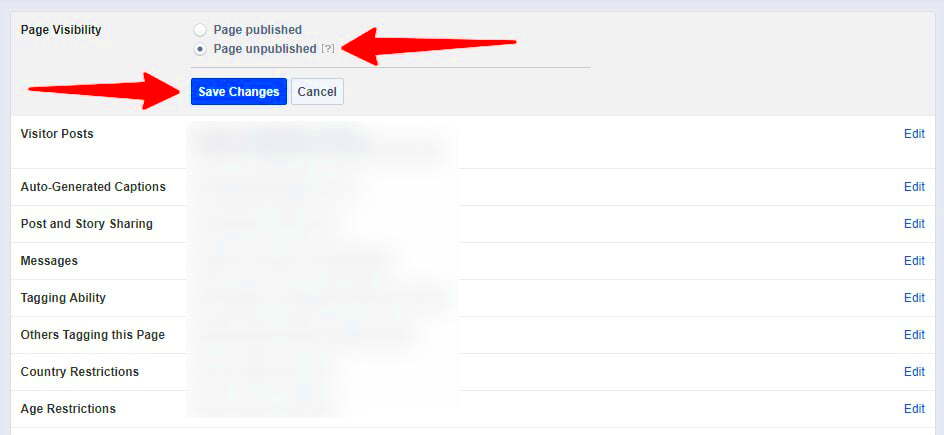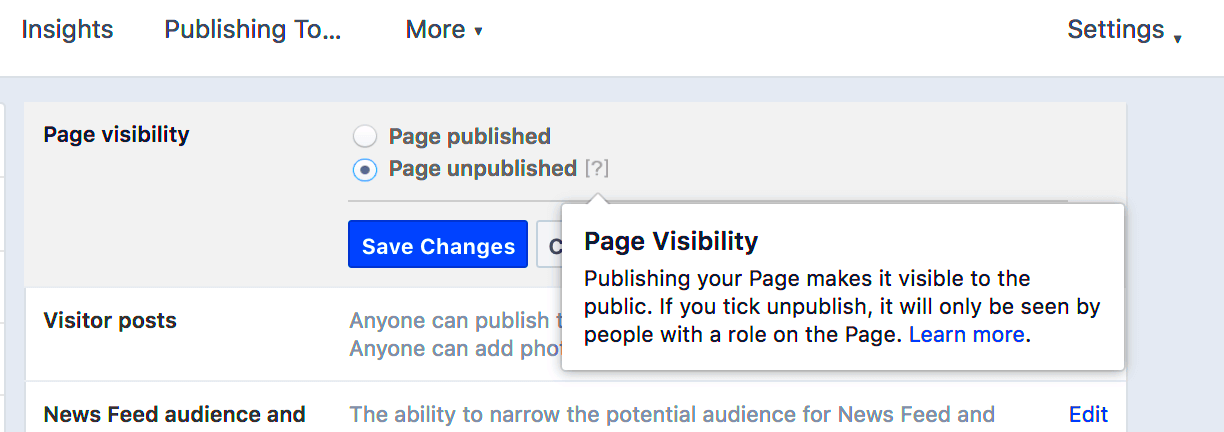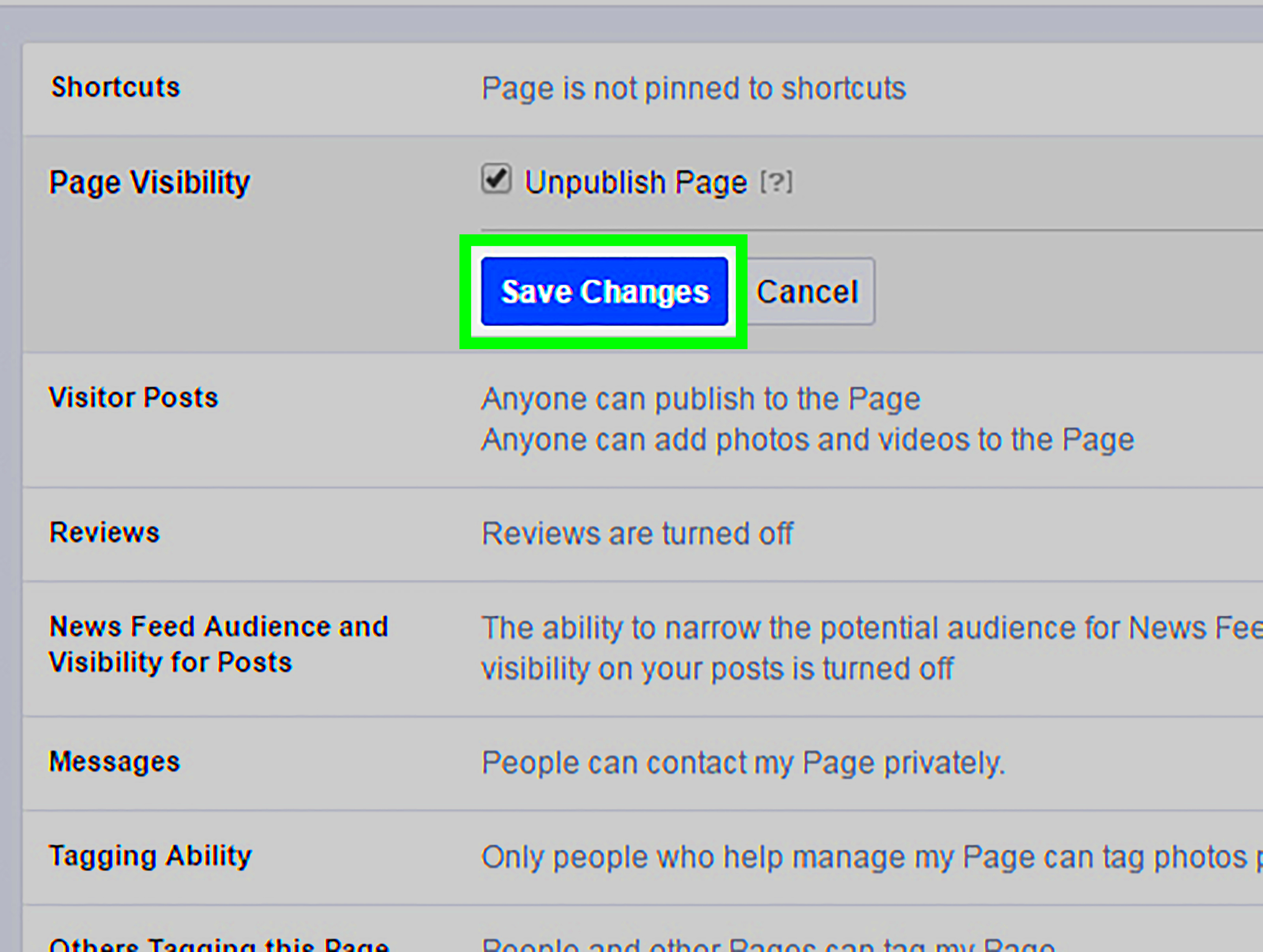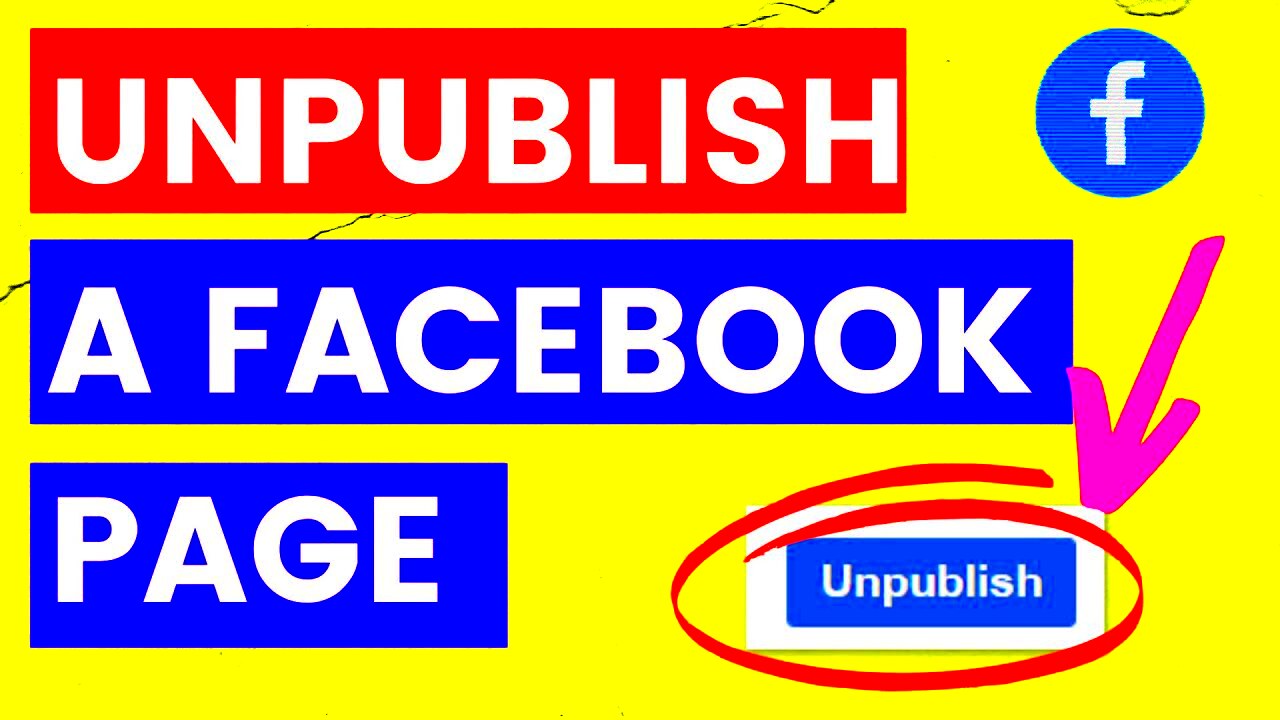Removing a
Facebook Page from public view may appear to be an action but there are reasons that could lead you to think about it. Maybe your brand is undergoing a transformation or you're taking a break from your operations. Unpublishing is a suitable choice if you want to take a break without permanently erasing your posts.Speaking from personal experience there was a time when I had to take down a page of my blog because I wanted to change its direction. This gave me the chance to rethink my content plan without feeling the obligation to keep a page running. It was a step that allowed me to improve my strategy and come back even better.
Here are a few typical justifications for taking down a Facebook Page:
- Rebranding or Relaunching: If your brand is undergoing significant changes, unpublishing can give you the space to rebuild your page's image.
- Seasonal or Temporary Pause: For seasonal businesses or those on a break, unpublishing is a way to avoid confusing or disappointing your audience.
- Content Review: If you need time to review or update your content, unpublishing prevents your audience from seeing outdated or irrelevant information.
How to Access Facebook Page Settings

Getting to the settings of your
Facebook Page is pretty easy but if you’re doing it for the first time it might seem a bit tricky. Here’s a quick guide to make the process smoother for you.To begin, ensure that you're signed into
Facebook and possess the required administrative privileges for the page you wish to handle. Proceed with these actions
- Open Facebook: On your desktop, go to facebook.com, or open the Facebook app on your mobile device.
- Navigate to Your Page: Click on the 'Pages' option in the sidebar (desktop) or from the menu (mobile) to find and select the page you want to manage.
- Go to Settings: On your page, look for the 'Settings' option in the sidebar (desktop) or tap the menu icon and select 'Settings' (mobile).
Its important to mention that the arrangement of settings may vary a bit between the desktop and mobile versions. However the main options stay consistent. If you run into any issues
Facebook has a help center with step by step guidance and troubleshooting suggestions.
Steps to Unpublish Your Facebook Page

Taking your Facebook Page offline is a simple task, but it’s important to pay attention to every detail to make sure your page is not visible to the public. Here’s a guide on how to accomplish this:
- Access Page Settings: As described earlier, start by navigating to the settings of the page you want to unpublish.
- Find 'Page Visibility': In the settings menu, look for the 'Page Visibility' section. This is where you’ll control the public status of your page.
- Select 'Page Published': You will see an option that says 'Page Published'. Click on the 'Edit' button next to it.
- Choose 'Unpublish': A dropdown menu will appear. Select 'Page unpublished' from the options. You may be asked to confirm your choice.
- Save Changes: After selecting 'Unpublish', make sure to click 'Save Changes' to apply your settings. Your page will no longer be visible to the public.
For me, this process was pretty straightforward, but its wise to verify that your page status accurately reflects the changes you want to make. If you have any posts lined up or active campaigns it might be worth pausing or adjusting them to match the updated page status.
What Happens When You Unpublish a Facebook Page

Unpublishing a Facebook Page may feel like ending a show but it’s not as permanent as it appears. When you choose to unpublish your page it’s similar to pressing pause – all your content stays intact just concealed from view.Based on my own journey, I’ve had to take down some pages during times of transformation in my digital pursuits. It’s an easy task but grasping its consequences can assist you in setting realistic expectations and getting ready in advance.
Here’s a breakdown of what happens:
- Visibility: Your page will no longer appear in search results or be visible to the public. Only admins and people with specific roles on the page can see it.
- Content: All your posts, photos, and information remain untouched. It’s like your page is in a virtual storage room, waiting for the right moment to come back into view.
- Interactions: Any ongoing interactions, like comments or messages, are paused. If someone tries to visit your page, they’ll see a message indicating that the page is unavailable.
- Notifications: No one will receive updates or notifications from your page while it’s unpublished.
This brief period of being unseen gives you the chance to adjust things or pause without the pressure of constant interaction. When I stepped back from my blogs Facebook page it brought me comfort to realize that my posts were still there patiently awaiting a comeback.
How to Republish Your Facebook Page
Bringing back a Facebook Page is similar to reopening a beloved store. It presents an opportunity to reconnect with your followers and update them on your latest activities. While the process is straightforward like unpublishing there are some key steps to take for a seamless return to the limelight.
Here’s how you can do it:
- Access Page Settings: Log in to Facebook and navigate to the page you previously unpublished. Go to the 'Settings' section, just like when you unpublish the page.
- Find 'Page Visibility': In the 'Page Visibility' section, you’ll find an option related to publishing status.
- Select 'Page Published': Click on the 'Edit' button next to the option that says 'Page unpublished' and select 'Page published' from the dropdown menu.
- Save Changes: Confirm your choice by clicking 'Save Changes'. Your page will now be visible to the public once again.
When I brought back a page after taking a break I discovered that refreshing the content and sharing any updates proved to be advantageous. It allowed me to reconnect with my audience and add a sense of novelty and enthusiasm to my comeback.
Managing Page Visibility and Notifications
Keeping track of who sees your Facebook Page and how often they get updates is similar to fine tuning a sensitive instrument. It lets you take charge of your content visibility and notification frequency. If you’re looking to tweak your pages visibility or manage notifications, here’s a guide to help you maintain a balance.
To manage these settings:
- Visibility: Go to 'Settings' on your page. Under 'Page Visibility', you can toggle between publishing and unpublishing. You can also adjust audience restrictions if you want to limit who can see your page.
- Notifications: In the 'Notifications' section, you can customize how you receive alerts about your page’s activity. Choose between email notifications, desktop alerts, or mobile push notifications to stay updated without feeling overwhelmed.
- Page Roles: If you have a team managing the page, assign appropriate roles and permissions. This ensures that everyone involved has the right level of access and can contribute effectively.
From what I have seen managing these preferences has been beneficial for me in keeping my content structured and in line with my objectives. It may seem like a commitment but it really helps to uphold a strong presence on the internet.
Alternatives to Unpublishing Your Page
There are ways to handle the visibility of your Facebook Page without resorting to unpublishing it. Depending on your objectives and circumstances you might find other options more suitable for your needs that allow you to keep your page partially visible. Consider these alternatives as different routes you can explore based on your specific goals and context.When I thought about taking down my own page I looked into a few other options that might be equally effective and here’s what I discovered.
- Adjust Privacy Settings: Instead of unpublishing, you can adjust your page’s privacy settings to limit who can view it. You can restrict access to certain countries, age groups, or even make it visible only to those who like the page.
- Turn Off Notifications: If the issue is about not wanting to engage with followers temporarily, you can simply turn off notifications or set your page to a lower engagement mode. This way, you don’t miss out on important updates but aren’t overwhelmed either.
- Change Page Information: Update your page details to reflect that it’s temporarily inactive. This way, visitors know that your page is under renovation or on a break, which can manage their expectations without fully unpublishing.
- Archive Content: If your concern is about outdated content, consider archiving old posts or updating them rather than unpublishing. This keeps your page active but ensures that only current and relevant content is visible.
These choices prove to be highly impactful. For example I utilized the privacy controls to restrict visibility as I overhauled my content approach and it yielded remarkable results without having to take anything down.
Common Issues and Troubleshooting
Even with the most carefully laid out strategies challenges can pop up when it comes to handling a Facebook Page. Whether its visibility issues or pesky technical hiccups these obstacles can be quite a nuisance if not dealt with swiftly. Allow me to share some frequent hurdles I've faced and offer you some tips on how to tackle them.
Here’s a summary of common problems and how to fix them:
- Page Not Visible: If your page isn’t visible to the public after unpublishing, double-check your 'Page Visibility' settings. Ensure it’s set to 'Page published'. Sometimes, a simple refresh or logging out and back in can solve the issue.
- Unable to Access Settings: If you’re having trouble accessing settings, ensure you have the correct administrative permissions. Sometimes, clearing your browser’s cache or switching browsers can help if the issue is technical.
- Notifications Not Working: If notifications aren’t coming through, check your notification settings both on Facebook and in your device’s notification preferences. Also, make sure you don’t have any active 'Do Not Disturb' modes.
- Content Issues: If posts aren’t displaying correctly, verify that there are no content restrictions or errors. Sometimes, Facebook’s algorithm might flag content incorrectly, so reviewing and adjusting can resolve the issue.
When I encountered these challenges staying calm and methodically working through the problems proved essential. Reviewing every configuration and staying informed with Facebooks support materials had a significant impact.
FAQ
Q: What happens if I unpublish my page and then change my mind?
If you choose to bring your page back all your posts and engagements will be reinstated. Simply go through the process to republish and your page will be accessible once more just like it used to be.
Q: Can I still manage my page if it’s unpublished?
Absolutely! Even if your page is not publicly published, you have the ability to control its content and settings. Only you and fellow admins will have access to view and modify the page.
Q: Will unpublishing affect my page’s followers?
When you unpublish your page it becomes hidden from the public eye meaning that your followers won’t receive any updates or new content during this period. Nevertheless their status as followers will still be preserved when you choose to republish.
Q: How long can I keep my page unpublished?
There are no restrictions on the duration for which you can keep your page in an unpublished state. You have the flexibility to keep it unpublished for as long as necessary and when you feel prepared you can choose to republish it.
Q: What should I do if I can’t unpublish or republish my page?
If you run into problems when trying to unpublish or republish something, you can try clearing your browsers cache, using a different device or reaching out to Facebook support for help.
Conclusion
Taking your Facebook Page offline can be a savvy decision if you need to take some time off refresh your brand or just hit pause on your online presence. It’s a way to control how your page appears without losing any posts or followers. From my own journey I’ve realized that being aware of options and knowing how to tackle challenges can make the process go more smoothly and with less hassle. By looking into different paths troubleshooting effectively and staying up to date you can navigate the realm of Facebook Page management, with assurance and simplicity.
 Getting to the settings of your Facebook Page is pretty easy but if you’re doing it for the first time it might seem a bit tricky. Here’s a quick guide to make the process smoother for you.To begin, ensure that you're signed into Facebook and possess the required administrative privileges for the page you wish to handle. Proceed with these actions
Getting to the settings of your Facebook Page is pretty easy but if you’re doing it for the first time it might seem a bit tricky. Here’s a quick guide to make the process smoother for you.To begin, ensure that you're signed into Facebook and possess the required administrative privileges for the page you wish to handle. Proceed with these actions Taking your Facebook Page offline is a simple task, but it’s important to pay attention to every detail to make sure your page is not visible to the public. Here’s a guide on how to accomplish this:
Taking your Facebook Page offline is a simple task, but it’s important to pay attention to every detail to make sure your page is not visible to the public. Here’s a guide on how to accomplish this: Unpublishing a Facebook Page may feel like ending a show but it’s not as permanent as it appears. When you choose to unpublish your page it’s similar to pressing pause – all your content stays intact just concealed from view.Based on my own journey, I’ve had to take down some pages during times of transformation in my digital pursuits. It’s an easy task but grasping its consequences can assist you in setting realistic expectations and getting ready in advance.
Unpublishing a Facebook Page may feel like ending a show but it’s not as permanent as it appears. When you choose to unpublish your page it’s similar to pressing pause – all your content stays intact just concealed from view.Based on my own journey, I’ve had to take down some pages during times of transformation in my digital pursuits. It’s an easy task but grasping its consequences can assist you in setting realistic expectations and getting ready in advance.
 admin
admin








